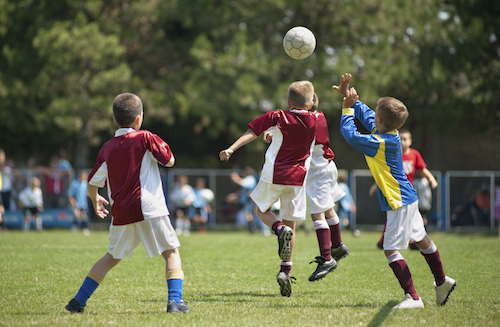
May 11, 2016 • 5 min read
How to Prevent Torn ACL Injuries Before They Happen to Our Young Athletes
Our 15 year old son has loved soccer since he could walk and has been playing for over 10 years. He has been blessed with amazing coaches and great teammates. The biggest thrill was when his competitive team, OPSC Monaco, made it to the Nationals. It was an incredible accomplishment and an unforgettable trip.
His focus over this past summer was to train hard for high school tryouts. His goal was to do whatever he could to make the Varsity team as a freshman. This was a huge challenge as the school team has an impressive 16 State titles. He worked hard several hours every day throughout the entire summer. He caught the head coach’s attention during a summer league and was asked to play with the varsity team during a pre-season tournament. When tryouts came, he was thrilled to earn a position as a striker on the Varsity squad. During the first game of a weekend tournament (still in pre-season), he got his first team goal just 20 minutes into the first half.

Then, in an instant, everything changed.
He was challenging an opponent and they were both running full speed towards the ball. Our son planted his feet to shoulder the much larger senior, convinced he was going to get the ball. Instead he felt pain in his knee, heard a popping noise and dropped to the ground. This one play changed his “top of the world” to the beginning of excruciating pain, endless medical appointments, MRIs, waiting close to 4 weeks for the actual ACL and meniscus surgery, then 6 months of grueling physical therapy to get back to the game he loves so much.
He was not alone in his misery. Another player on his team tore his ACL during the same game.
Torn ACL injuries are becoming far too common among young athletes.
And these two players are just two of the staggering 250,000 ACL injuries that are anticipated this year in the US, with approximately 100,000 of these players needing surgery. The sad fact is that over 50% of these ACL tears involve young athletes between 15 to 20 years old. Suffering a torn ACL is a really big deal and can have serious and sometimes long term effects. The missed school work can make it hard to catch up, grade point averages can plummet and young athletes may even fight depression when they can’t participate in the sports they love. Still others are afraid to return to the field once they have experienced the pain and tedious recovery time of a devastating injury. Lastly, those with badly timed injuries can lose athletic scholarships or even professional careers. Add to this long list the 70% increased risk of early osteoarthritis about 10 years following an injury, and no wonder parents and athletes struggle when this happens to them.
The most tragic part of this story is that as many as 88% of these injuries could have been prevented with correct stretching and movement education.
For those of us who have experienced an ACL tear or other serious injury with our own child, having to help him or her through the pain, staying up all night with ice machines and handling pain medication schedules, we certainly wish we could have a do-over and prevent it from happening in the first place.
Studies show that most serious injuries that require surgery occur during actual competitions, not during practices or scrimmages. 70% of ACL injuries are actually non-contact and are the combined result of improper mechanics mixed with a little bad luck.
Youth sports are getting more competitive and kids are competing at younger ages. To add fuel to the fire, many kids are playing one sport year round. A lot of young athletes do this and participate in multiple sports as well. With this constant stress on growing bodies, it is no wonder the number of injuries is growing as well.
It’s the opinion of numerous experts in sports medicine that many of these non-contact injuries are preventable. Often injuries are more of a cumulative effect rather than an instantaneous mechanical breakdown. If a young athlete’s body gets too much activity and not enough rest for weeks or months, something’s going to give. Thankfully, with a little information and training we can help keep our young athletes out of the operating room.
Further reading:
Watch this video: Game Changers: 7 Exercises to Prevent ACL Injuries
The ACL Solution: Prevention and Recovery by Dr Robert Marx, Orthopedic Surgeon
Knee Injury Prevention Program (KIPP) for Coaches – Instructional PowerPoint, along with videos demonstrating each of the exercises is available online for free.
PEP Program: Prevent injury and Enhance Performance — PEP exercise descriptions can be downloaded for free. A video demonstrating the PEP exercises can be ordered for a $35 donation to the Santa Monica Sports Medicine Foundation.
Active Knee Brace Support for Running, ACL Tear or Arthritis, One Size – Black
Sandy J. Duncan is a freelance writer, wellness coach and soccer mom. She and her husband have 5 teenagers so life is never dull. Her natural living blogs are 10TopHealthSecrets.com and AllNaturalHealthReviews.org.
